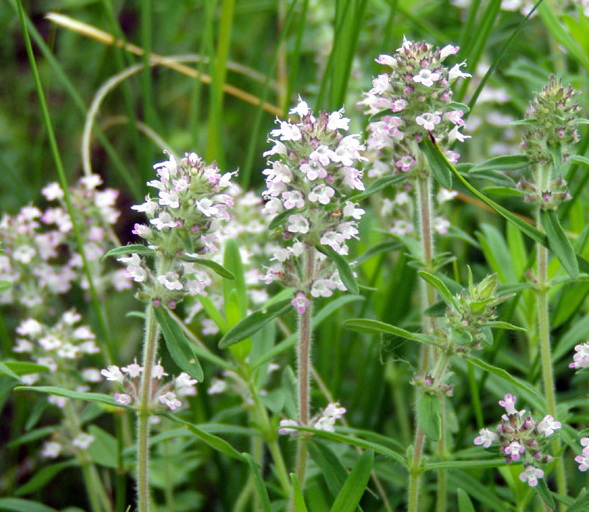APPLICATION OF INFRARED DRYING TECHNOLOGY FOR DEHYDRATION THYMUS MARSCHALLIANUS WILLD. HERB
UDK 615.322:582.949.27:542.47:57.086.142:54-74(045)
Abstract
The optimal and effective type of drying for plant raw materials allows to preserve the maximum amount of biologically active substances. This determines the relevance of the selection of dehydration conditions. We conducted a comparative study of anatomical and diagnostic signs and numerical indicators of Thymus marschallianus herb dried by natural (air-shade) and thermal (infrared) methods. The study showed that the raw materials dried in two ways have identical external signs and morphological and anatomical structure, approximately the same moisture content, extractive substances and essential oils. Extracts of Thymus marschallianus herb of two types of drying have similar chromatographic profiles and spectral characteristics – two pronounced maxima, similar in values, but the optical density on the differential spectra recorded after the addition of aluminum chloride is higher in Thymus marschallianus dried by infrared drying, which indicates a higher content of flavonoids. Infrared drying at a temperature of 30–32 °C for 2 days allows you to save more flavonoids without changing the qualitative composition and without leading to the loss of extractives and essential oils for Thymus marschallianus.
Downloads
Metrics
References
Zhumakanova B.S., Korona-Głowniak I., Skalicka-Wozniak K., Ludwiczuk A., Baj T., Wojtanowski K.K., Jozefczyk A., Zhaparkulova K.A., Sakipova Z.B., Malm A. Molecules, 2021, vol. 26, no. 11, 3193. DOI: 10.3390/molecules26113193.
Gubanenko G.A., Mayurnikova L.A. Polzunovskiy vestnik, 2013, no. 4-4, pp. 183–187. (in Russ.).
Sheremet'yeva A.S., Napsheva A.M., Durnova N.A. Farmatsiya i farmakologiya, 2021, vol. 9, no. 6, pp. 476–484. DOI: 10.19163/2307-9266-2021-9-6-476-484. (in Russ.).
Sklyarevskaya N.V., Generalova Yu.E., Beskostaya M.D. 90 let ot rasteniya do lekarstvennogo prepara-ta: dosti-zheniya i perspektivy. [90 years from plant to medicinal product: achievements and prospects]. Moscow, 2021, pp. 222–228. DOI: 10.52101/9785870191003_2021_222. (in Russ.).
Teplyashin V.N., Chentsova L.I., Nevzorov V.N. Tekhnologii i oborudovaniye dlya sushki rastitel'nogo syr'ya. [Tech-nologies and equipment for drying plant materials]. Krasnoyarsk, 2019, 173 p. (in Russ.).
Zavaliy A.A. Sushka, khraneniye i pererabotka produktsii rasteniyevodstva. [Drying, storage and processing of crop products]. Moscow, 2018, pp. 92–98. (in Russ.).
Doymaz I. Journal of Food Science and Technology, 2012, vol. 49, pp. 760–766. DOI: 10.1007/s13197-010-0217-8.
Nikulin A.S., Brevnova Ye.S. Aktual'nyye voprosy sovershenstvovaniya tekhnologii proizvodstva i pererabotki produktsii sel'skogo khozyaystva. [Current issues of improving the technology of production and processing of agricul-tural products]. Yoshkar-Ola, 2022, pp. 140–143. (in Russ.).
Khudonogova Ye.G., Khudonogov I.A., Khudonogov A.M. Vestnik Krasnoyarskogo gosudarstvennogo agrarnogo universiteta, 2012, no. 5, pp. 343–346. (in Russ.).
Tezcan D. et al. Food Science and Technology International, 2021, vol. 27, no. 1, pp. 32–45. DOI: 10.1177/1082013220929142.
Bykova T.O., Makarova N.V. Kachestvo i ekologicheskaya bezopasnost' pishchevykh produktov i proizvodstv. [Quali-ty and environmental safety of food products and production]. Tver, 2016, pp. 173–175. (in Russ.).
Zhang D. et al. Ultrasonics Sonochemistry, 2023, vol. 92, 106287. DOI: 10.1016/j.ultsonch.2022.106287.
Jafari F., Movagharnejad K., Sadeghi E. Food Chemistry, 2020, vol. 333, 127423. DOI: 10.1016/j.foodchem.2020.127423.
Lebed'kova A.A., Povydysh M.N. Perspektivy lekarstvennogo rasteniyevedeniya. [Perspectives of medicinal plant science]. Moscow, 2018, pp. 479–484. (in Russ.).
Karpukhin M.Yu. Vestnik biotekhnologii, 2017, no. 2, p. 12. (in Russ.).
Kumar S.S. et al. Plant Foods for Human Nutrition, 2020, vol. 75, pp. 283–291. DOI: 10.1007/s11130-020-00804-4
Gosudarstvennaya farmakopeya Rossiyskoy Federatsii. XV izd. [State Pharmacopoeia of the Russian Federation. XV ed.]. URL: https://pharmacopoeia.regmed.ru/pharmacopoeia/izdanie-15/. (in Russ.).
Sheremet'yeva A.S., Fomina Yu.A., Shestopalova N.B., Durnova N.A. Voprosy biologicheskoy, meditsinskoy i far-matsevticheskoy khimii, 2023, vol. 26, no. 3, pp. 21–26. DOI: 10.29296/25877313-2023-03-03. (in Russ.).
Gosudarstvennaya farmakopeya Rossiyskoy Federatsii. XIV izd. [State Pharmacopoeia of the Russian Federation. XIV ed.]. Мoscow, 2018, vol. I, vol. II, vol. IV. URL: https://femb.ru/record/pharmacopea14. (in Russ.).
Adamovich A.A., Sheremet'yeva A.S., Abutaliyeva T.V., Minzyuk Ye.V., Strizhevskaya V.N., Simakova I.V. Biolog-icheskiye nauki: traditsii, dostizheniya, innovatsii. [Biological sciences: traditions, achievements, innovations]. Saratov, 2023, pp. 60–61. (in Russ.).
Sheremet'yeva A.S., Fomina Yu.A., Shestopalova N.B., Durnova N.A. Farmatsiya, 2021, vol. 70, no. 7, pp. 41–46. DOI: 10.29296/25419218-2021-07-07. (in Russ.).
Lapova N.V. Vestnik Vitebskogo gosudarstvennogo meditsinskogo universiteta, 2022, vol. 21, no. 1, pp. 104–109. DOI: 10.22263/2312-4156.2022.1.104. (in Russ.).
Starchak Yu.A. Farmakognosticheskoye izucheniye rasteniy roda tim'yan (Thymus L.) kak perspektivnogo istochnika polucheniya fitopreparatov: diss. … dokt. farm. nauk. [Pharmacognostic study of plants of the genus thyme (Thymus L.) as a promising source of herbal medicines: dissertation. ... doc. pharm. Sci.]. Kursk, 2016, 472 p. (in Russ.).

Copyright (c) 2024 chemistry of plant raw material

This work is licensed under a Creative Commons Attribution 4.0 International License.

This work is licensed under a Creative Commons Attribution 4.0 International License.
The authors, which are published in this journal, agree to the following conditions:
1. Authors retain the copyright to the work and transfer to the journal the right of the first publication along with the work, at the same time licensing it under the terms of the Creative Commons Attribution License, which allows others to distribute this work with the obligatory indication of the authorship of this work and a link to the original publication in this journal .
2. The authors retain the right to enter into separate, additional contractual agreements for the non-exclusive distribution of the version of the work published by this journal (for example, to place it in the university depository or to publish it in a book), with reference to the original publication in this journal.
3. Authors are allowed to post their work on the Internet (for example, in a university repository or on their personal website) before and during the review process of this journal, as this may lead to a productive discussion, as well as more links to this published work.











